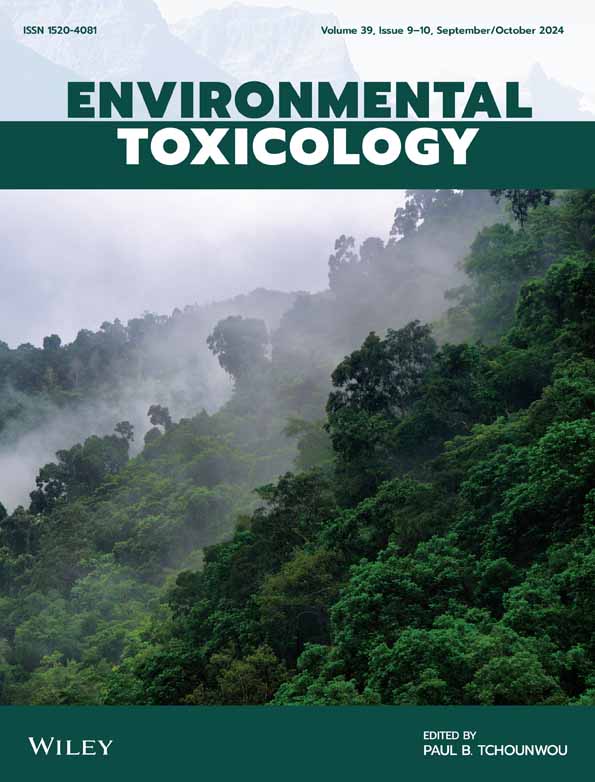金属污染马齿苋性腺的形态和分子变化
IF 3.2
3区 医学
Q2 ENVIRONMENTAL SCIENCES
引用次数: 0
摘要
采矿是一些国家经济发展中最重要的活动之一;然而,它对水资源产生重大影响,在这些环境中释放金属。鱼类接触金属会改变生物体的氧化还原能力,增加活性氧和活性氮的产生,引起分子和细胞的变化。2019年,新热带地区重要河流帕拉奥佩巴河流域遭受了数吨尾矿排放,影响了整个水生生态系统。本研究分析了金属在马来刺槐(Hoplias malabaricus)生殖腺内积累引起的细胞变化及其与iNOS和金属硫蛋白水平变化的关系。10份标本采集于对照环境,10份标本采集于污染的Paraopeba河。为了进行组织病理学分析,从所有个体收集性腺碎片并提交常规组织学技术。此外,免疫标记金属硫蛋白和iNOS来评估氧化应激和金属的影响。结果表明,Paraopeba河中的几种金属导致雄性和雌性性腺的组织病理学改变。不同生殖细胞均可见金属硫蛋白和iNOS的阳性染色。本研究显示了金属氧化能力对Paraopeba河鱼类生殖形态生理的影响,即使是在大坝破裂5年后。本文章由计算机程序翻译,如有差异,请以英文原文为准。
Morphological and Molecular Alterations in the Gonads of Hoplias malabaricus Contaminated by Metals
Mining is one of the most important activities in the economic development of several countries; however, it generates significant impacts on water resources, releasing metals in these environments. The exposure of fish to metals alters the redox capacity of the organism, increasing the production of reactive oxygen and nitrogen species, causing molecular and cellular changes. In 2019, the Paraopeba River basin, an important river in the Neotropical region, suffered from the discharge of tons of mining tailings, affecting the entire aquatic ecosystem. The present study analyzed cellular changes and their relationship with alterations in iNOS and metallothionein levels, caused by the accumulation of metals in the gonads of Hoplias malabaricus
求助全文
通过发布文献求助,成功后即可免费获取论文全文。
去求助
来源期刊

Environmental Toxicology
环境科学-毒理学
CiteScore
7.10
自引率
8.90%
发文量
261
审稿时长
4.5 months
期刊介绍:
The journal publishes in the areas of toxicity and toxicology of environmental pollutants in air, dust, sediment, soil and water, and natural toxins in the environment.Of particular interest are:
Toxic or biologically disruptive impacts of anthropogenic chemicals such as pharmaceuticals, industrial organics, agricultural chemicals, and by-products such as chlorinated compounds from water disinfection and waste incineration;
Natural toxins and their impacts;
Biotransformation and metabolism of toxigenic compounds, food chains for toxin accumulation or biodegradation;
Assays of toxicity, endocrine disruption, mutagenicity, carcinogenicity, ecosystem impact and health hazard;
Environmental and public health risk assessment, environmental guidelines, environmental policy for toxicants.
 求助内容:
求助内容: 应助结果提醒方式:
应助结果提醒方式:


